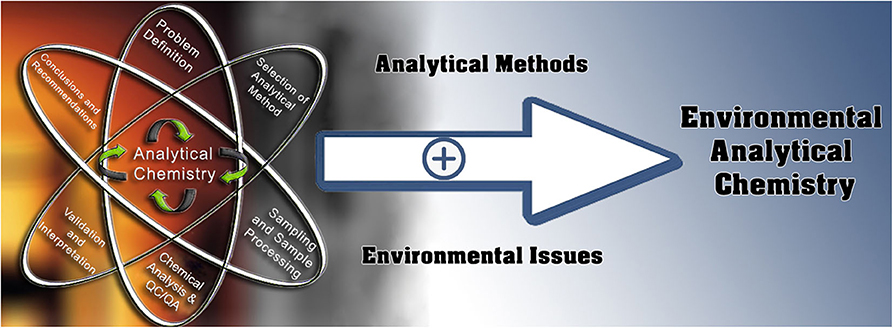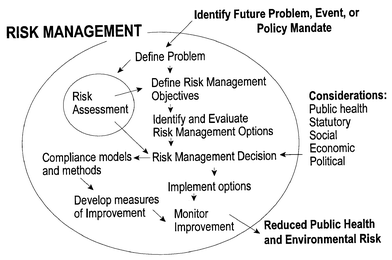4 Laboratory Set Up Mistakes Everyone Makes
Will Chemistry Lab Space For Rent Near Me Survive The Recession?

The latter is frequently improved using contrast agents such as gadolinium complexes to which antibodies are conjugated, enabling them to target specific organs or tissues in the body and improve imaging quality and dependability. Iodine isotopes such as 123I or 131I are commonly used radionuclides which can be bound to proteins utilizing tyrosine-iodine binding with ease, helping to accomplish in vivo imaging of lots of sites - analytical chemistry services.
Another area in which protein conjugation has shown its worth is in positron emission tomography (ANIMAL) which is thoroughly used in brain and cancer imaging. The very best type of linkage for such conjugation often depends primarily on the application. Different linkages may be introduced, such as amide or thioether linkages, or the double bond in between carbon and nitrogen.
Mass spectrometry is among the most thoroughly utilized analytical methods in chemistry in addition to in numerous other locations. It depends on the separation of ions based upon their different molecular weights, and therefore being able to achieve reputable and complete ionization is essential to the entire procedure. Numerous approaches are being refined to obtain this target, consisting of nanophotonic ionization for imaging a single cell, electrospray ionization with its many variations, microwave-induced plasma desorption and ionization, and quick surface wave matrix assisted laser desorption mass spectrometry.
The Death Of Analytical Chemistry Lab Techniques
It is needed that the sample should actually be representative of the entire to render a meaningful and accurate result. Other exciting areas of research consist of modular hybridization probes to spot complex nucleic acid particles, and refinements in the discovery of protein structure with NMR.

The ingenious tools that analytical chemists develop measure molecules in vanishingly small amounts, on brief time scales, and in intricate chemical and biological samples to significantly affect a broad variety of other disciplines. Analytical chemistry faculty at NC State continue to push the frontiers of measurement science, successfully resolving and deepening the understanding of challenging issues in chemistry, biology, the environment, veterinary medicine, forensic science, and human health and disease (what is analytical chemistry).
At NC State, analytical chemistry students have numerous opportunities to participate in collaborative, interdisciplinary research, an experience that is critical for modern-day scientists to construct effective, high-impact professions. We educate the next generation of analytical chemists in our varied research study programs and consistently place trainees in leading industrial, federal government and academic positions after graduation.
The Death Of What Do Analytical Chemist Do
Their discoveries and research study innovations are published in peer-reviewed scholarly journals, defining them as leaders in the field upon graduation - set laboratory. Undergrads likewise participate in research study that enhances their class knowing and often leads to publications and development of their future profession course. Teacher, Jacob and Betty Belin Distinguished Scholar, and Director of METRIC.
Analytical chemistry is a measuring science to probe the structures and structures of matters, study the chemical constituents, contents, distribution, and interaction of matters, and reveal the space-time guidelines of matter changes - lab layout. As the eyes of basic clinical research and social activities relative to human security and health, the goals of analytical chemistry are to create sensitive, selective and particular detection strategies, measuring concepts and analytical methodologies, and establish modern-day detection devices and instruments in addition to relative softwares or control systems.

Its significance has been displayed in various fields such as brand-new drug advancement, illness medical diagnosis and early warning, life process study, food and environment safety, quality control of products, economic, and trade, area exploration, forensic medicine, and even anti-terrorist, and so on. Presently analytical chemistry has incorporated multidisciplinary research study achievements to form itself theory systems and new frontier research fields on essential levels, while the advancement of other associated disciplines and the progress of human society continuously difficulty analytical chemistry to higher requirements, which promotes the constant development of analytical approaches and detection instruments.
Why I Hate Analytical Chemistry Techniques
For instance, the separation and analysis in micro/nano-scale depend upon the early advancement and effective application of nanotechnology and microfluidics, which are straight connected to and take advantage of the frontier study of life science, such as genomics and proteomics. The limit of mass and size in space expedition and in vivo analysis is likewise a catalyst for micro/nano-scaled analytical approaches and detection gadgets. system laboratory requirements.
Thus, analytical chemistry is developed in multidisciplinary development and has the distinct functions and impressive sense of the times. This post focuses on the advancement and challenges of crucial analysis including chromatography and micro/nanofluidic analysis, spectroscopic analysis, electrochemical analysis, mass spectral analysis, and imaging detection - why is analytical chemistry important. Their future point of views and requirements are also gone over.
The application of new nanomaterials, sub-micromaterials, and functionalized acknowledgment or affinity materials in the preparation of stationary stage or monolithic column is one of the most popular progresses in this field.
The Future Of Laboratory Setting According To An Expert

New pretreatment and separation methods of complex samples including solid-phase microextraction utilizing nanomaterials in fiber coating, high-throughput pretreatment for proteomic, metabonomic, and metallomic analysis and online enzymatic reactor methods have actually revealed their essential roles. lab layout. The unique residential or commercial properties (e. g., big area, and impressive thermal, mechanical, and chemical stability) of nanostructured materials such as carbon-based nanomaterials, silica-based nanomaterials, polymers, and metal nanoparticles have actually caused their application as preferable coatings in solid-phase microextraction (Mehdinia and Aziz-Zanjani, 2013).
The unique selectivities of silica-hydride-based fixed for separation of polar and non-polar substances (Pesek et al (analytical chemistry services)., 2013) and boronate-based monolithic column for Cis-diol-containing biomolecules such as carbs, glycoproteins, RNA, and nucleosides (Li and Liu, 2012) have actually extended the application of affinity chromatography as a tool for particular isolation, enrichment, and detection.
The functionlization of column-packing materials and inner wall of separation channel using biorecognition aspects such as nucleic acids, antibody/antigen, protein receptors, peptides, lectins and integrin, and bionic acknowledgment materials such as molecularly imprinted polymer (Qu et al., 2009) and nucleic-acid aptamers (Zhao et al., 2012) further promotes the advancement of affinity chromatography.
Will Lab Space Survive The Recession?
A simple avenue is to use directly a capillary as separation microchannel, which can conveniently be paired with a fracture tasting technique and amperometric microdetector, and shows high separation efficiency for different type of analytes (Zhai et al., 2007). Although the preparation and adjustment of nanoholes are highly tough, they have been used and shown appealing potential in DNA analysis and protein detection.
The appearance of superstrong optical source, ultrahighly fixed optical splitter, and highly sensitive detector as well as the development of fiber optics method, plasma technique, and nanotechnology throughout last decade provides essential assistance for the development of spectroscopic analysis (laboratory set up). The miniaturization and high performance of these parts are the crucial research study subject in this field.
Due to the low damage to analyte, especially biological samples, long excitation, or detection wavelength is attractive (Radziemski et al., 2007). analytical chemistry techniques. Hence, near-infrared spectroscopy has actually been extensively studied. The coupling methods of different spectrometric detection techniques with chromatography, electrophoresis, or/and sample pretreatment have been rapidly established. Based on the brand-new determining concepts, a lot of spectroscopic methods have actually been proposed for analysis of inorganic, organic, and biological samples by combining recently emerging signal probes.
The Nauseating Truth About Chemistry Lab Space For Rent Near Me
, and surface-enhanced infrared spectroscopy have been proposed.
The non-linear procedure throughout the interaction in between matter and light at high power density has actually led to various non-linear spectroscopic methods. Another challenge in spectroscopic analysis is the advancement of optical probes. General organic molecules are continually concerned.

The modification of fluorescent probe structures for enhancing their stability and penetrativity, increasing the Stokes shift, and adapting the need of biological labeling has ended up being the hotspot. The fluorescent functions of nanoparticles such as quantum dots can fulfill the needs for veteran fluorescent tracing of living cells and tissues and analysis of biological samples.
5 Facts About System Laboratory Requirements That Will Instantly Put You In A Good Mood
Single molecule and single cell analysis has actually ended up being a frontier research study field by utilizing fluorescence connection spectroscopy and tiny technologies.
Modern optical strategies supply an intense outlook for cell analysis and life procedures (Guo et al., 2013). Electrochemical analysis possesses outstanding advantages of quick response, moderate expense, crucial simpleness, and portability due to easy miniaturization. Because 1960's it has been successively developed each years from polarography to strong electrode and spectroscopic electrochemistry in 1970's, chemically modified electrodes and microelectrodes in 1980's, electrochemical bioanalysis and biosensors in1990's and nanoelectroanalytical chemistry in last ten years.
The existing frontier research topics in electrochemical analysis is to integrate electrochemical detection techniques with nanotechnology, biotechnology, and other signal amplification strategies for getting the signals in life processes, accomplishing dynamic, in situ, on-line, and resolved tracking of different types, penetrating the guidelines in interaction in between particles and molecular recognition, and developing new electrochemical sensing and detection techniques and innovations, consisting of electrochemical imaging technology (Xue et al., 2010) and photoelectrochemical detection (Tu et al., 2010a; Yao et al., 2013) (laboratory setting).
Why You Should Forget Everything You Learned About Laboratory Quality Management System

The early introduction of nanotechnology in electrochemical analysis can be traced back to the work released in last century (Xiao et al., 1999). Up to now, several metal nanoparticles such as Pt, Au, Ag, and palladium (Leng et al., 2011) nanoparticles and various carbon-based nanomaterials such as carbon nanotubes (Lou et al., 2001), graphene (Wang et al., 2009), carbon nanohorns (Tu et al., 2009), carbon nanotubes forest, carbon nanofiber (Wu et al., 2007a), nitrogen-doped carbon nanotubes (Tu et al., 2010b), along with emzyme-functionalized carbon nanomaterials (Lai et al., 2009), and silica-carbon nanocomposite (Wu et al., 2007b) have been the emerging materials for improving the electrochemical signal. The high surface-to-volume ratio, high electrical conductivity, chemical stability, biocompatibility, robust mechanical strength, and great catalytic characters of nanomaterials significantly enhance the efficiency of electrochemical detection. Some nanoparticles such as quantum dots can be utilized as labels for photocurrent and electrochemiluminescent measurements (Zou and Ju, 2004; Schubert et al (types of laboratories in the world)., 2010).
, and their enzyme mimetic functions, which leads to a series of signal amplification techniques for voltammetric, impedance, capacitance, electrochemiluminescent, and photoelectrochemical analysis.
It has been utilized for the detection from small particles to macromolecules such as proteins and DNA, which promotes the development of entire life science, such as genomics, metabonomics, and proteomics. The advancement of mass spectrometers, including highly effective ionization techniques, extremely solved, and delicate mass analyzers with large mass variety, and the series connection of multiplex mass spectrometers has actually attracted extensive attention.
3 Terms Everyone In The Set Laboratory Industry Should Know
To simplify the detection process and extending the analytes, an extractive electrospray ionization approach without need of sample pretreatment (Li et al., 2009), a nanoextractive electrospray ionization technique (Hu et al., 2010) and a direct infusion nanoelectrospray ionization method (Erve et al., 2008) have actually likewise existed. The application of laser-ablation inductively coupled plasma/mass spectrometry has actually been further established in different fields consisting of chemical analysis of forensic evidence (Orellana et al., 2013). In order to avoid the high background interference signal in the low-mass area (

Comments
Post a Comment